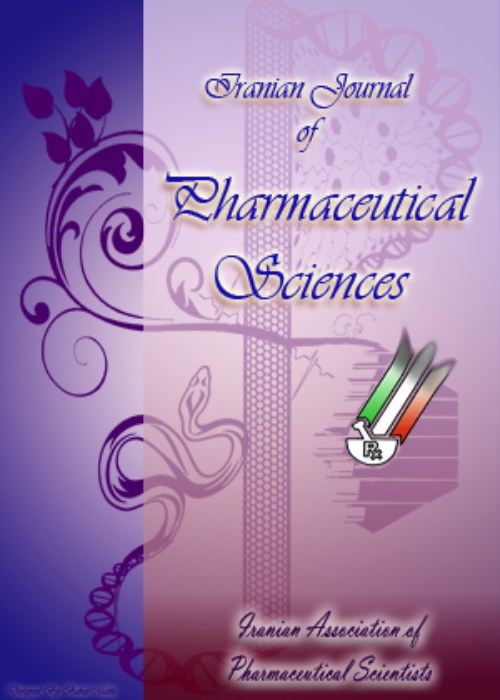Development and Validation of RP-HPLC-UV Method for Determination of Diclofenac Sodium Residues on Surfaces for Cleaning Validation
Author(s):
Article Type:
Research/Original Article (دارای رتبه معتبر)
Abstract:
In recent years, cleaning validation has achieved a position of increasing in the pharmaceutical industry. It provides assurance to the cleaning procedure that ensures equipment is consistently cleaned from the product, detergent and microbial residues to an acceptable level to avoid cross-contamination and adulteration of drug product with other active ingredients. The aim of this study was to demonstrate the applicability of reversed-phase high-performance liquid chromatography coupled with UV detector (RP-HPLC-UV) method for determining the residues of Diclofenac sodium in cleaning control swab samples from equipment surfaces after manufacturing of Diclofenac sodium injection (75mg/3ml) in order to control a cleaning procedure. Diclofenac sodium was evaluated as the worst case. This API is sparingly soluble in water and adherent to surfaces. The acceptable residue limit (ARL) of Diclofenac sodium was calculated (0.75 µg/cm²). The analytical method was validated with respect to system suitability test, specificity, linearity-range, accuracy, Repeatability, intermediate precision, limit of detection (LOD) and quantitation (LOQ). These studies were performed in accordance with established guidelines, International Conference on Harmonisation ICH Q2 (R1). The precision of the swabbing procedure and stability of Diclofenac sodium standard solutions were also investigated. The swab sampling method was developed and optimized in order to obtain a suitable recovery (˃80%) from stainless steel surfaces 316L. Alpha Texwipe® TX761 polyester Swabs were moistened with diluent (mobile phase) a mixture of Acetonitrile-Water-Orthophosphoric Acid 85 % (600:400:1, v/v/v) (pH 2.5* ± 0.2). The HPLC method was developed in isocratic mode using Hypersil OctaDecylSilyle ODS C18 (250 × 4.6 mm, 5 μm) column at 25°C. At a flow rate of 1.2 ml/min, an injection volume of 20 μl. Detection was carried out at 235 nm. The retention time of Diclofenac sodium was 4.8 min. The calibration curve was linear (the coefficient of determination R²= 0.9988) over a concentration range 0.05 μg/ml – 12.5 μg/ml. The intra-day, inter-day precision and precision of the swabbing procedure expressed as relative standard deviation were below 5%. The limit of detection and quantitation were 0.014 μg/ml and 0.05 μg/ml respectively. The average recovery of the swabbing method obtained was 87.80 %, when two swabs moistened were used. It is evident that this proposed validated RP-HPLC-UV method with the appropriate swabs Texwipe® TX761 procedure could be applicable for cleaning validation to detect traces levels of Diclofenac sodium residues on pharmaceutical manufacturing equipments.
Keywords:
Language:
English
Published:
Iranian Journal of Pharmaceutical Sciences, Volume:15 Issue: 4, Autumn 2019
Pages:
11 to 30
magiran.com/p2185324
دانلود و مطالعه متن این مقاله با یکی از روشهای زیر امکان پذیر است:
اشتراک شخصی
با عضویت و پرداخت آنلاین حق اشتراک یکساله به مبلغ 1,390,000ريال میتوانید 70 عنوان مطلب دانلود کنید!
اشتراک سازمانی
به کتابخانه دانشگاه یا محل کار خود پیشنهاد کنید تا اشتراک سازمانی این پایگاه را برای دسترسی نامحدود همه کاربران به متن مطالب تهیه نمایند!
توجه!
- حق عضویت دریافتی صرف حمایت از نشریات عضو و نگهداری، تکمیل و توسعه مگیران میشود.
- پرداخت حق اشتراک و دانلود مقالات اجازه بازنشر آن در سایر رسانههای چاپی و دیجیتال را به کاربر نمیدهد.
In order to view content subscription is required
Personal subscription
Subscribe magiran.com for 70 € euros via PayPal and download 70 articles during a year.
Organization subscription
Please contact us to subscribe your university or library for unlimited access!


